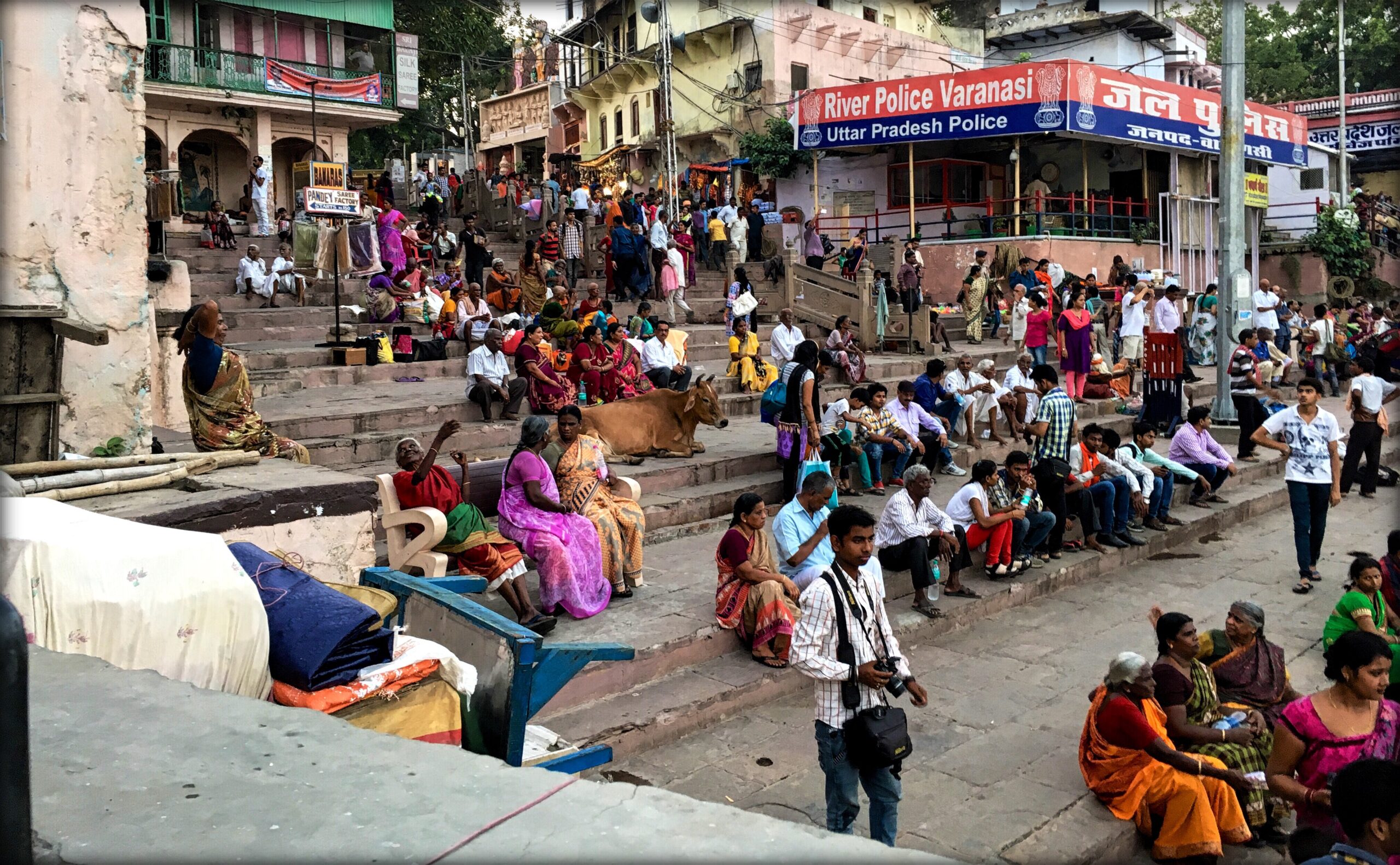One Of These Things Is Not Like The Others – Dashaswamedh Ghat – Varanasi, India

We’ve packed our bags and hopped a flight southeast to Varanasi, the religious capital of India and one of the oldest continuously inhabited cities in the world. Varanasi lies on the Ganges River, which is considered sacred by the Hindu people. Many Hindus make a pilgrimage here at least once in their lifetime to wash away their sins or to cremate a loved one. Many people also come here to die; they believe that if you die in Varanasi, you will be liberated from the cycle of birth and death. It is here, along the Ganges River, that rituals of both life and death take place in public. Prior to coming here, we read that there’s no other city in the world quite like it; it’s quintessentially India, not for the faint of heart, and you either love it or hate it. We love it!
Before going into Varanasi, we first went to the nearby town of Sarnath, a famous Buddhist site. After becoming enlightened, Buddha preached his first sermon here. In the 3rd century, a complex of stupas and monasteries was built on the grounds, but it was later destroyed in the 12th century. Today, only ruins remain, but it’s still worth a visit. While walking around the ruins, we realized that we had become part of the main attraction – there were lots of stares and giggles. At one point, Christine was trying to get out of the way of a lady taking a picture, until she realized that she was the one being photographed.
As the evening approached, we headed back to the heart of Varanasi to try to understand what this city was all about. Our driver dropped us off, and with our guide we walked through the crowded streets of the old city to Dashaswamedh Ghat (ghats are what they call the stairs that lead down to the river) to watch an aarti, a light ceremony that is performed every evening as a tribute to the Ganges River. Hundreds of people, dogs and even a few cows (can you spot the cow in the picture?) gathered on the steps, in the river, and along the banks to watch seven priests perform a ritual with brass lamps and fire, accompanied by chants. Before the ceremony began, people were performing their own rituals in the crowd. There were priests covered in ashes, blessing others. Someone was walking around with a fire – people would put their hands in the fire and then rub them on their faces. People from all walks of life showed up – vendors selling flowers, offerings and trinkets, families taking selfies with the Ganges in the background, beggars, pilgrims (you could spot them by their shaved heads – if it’s their first pilgrimage to Varanasi, they have to shave their heads), priests, and dazed foreigners.
We sat up on a platform to get a good view of the whole ceremony. For us, the best part was the people (and cow) watching. Christine spotted a sadhu perched on top of a crate in the midst of the crowd that looked like a Rastafarian-Indian Jesus, his skin covered in ashes. Once the ceremony started, there was an energy that filled the air. Music was playing, priests were chanting, and the crowd was clapping along. It was definitely a neat experience. We left shortly before the end of the ceremony to try to beat the crowds – but you can’t beat the crowds here. It’s always crowded. Getting through the masses of people, bicycles, cars, motorbikes, rickshaws, dogs, and cows was a challenge. There’s only one lane, and everyone and everything uses it to go any direction (…we thought crossing the street in Vietnam was difficult, but that was nothing compared to this). We kept our heads down, not wanting to attract too much attention, and slowly kept moving forward. We finally made it back to the car where we thought we would be able to relax on the drive back to the hotel.
A few minutes into the ride there was commotion in the streets. We slowed down to see what the yelling was about. We saw a man with a very large stick, and then we saw IT, about 2 seconds before we heard it… A langur that was as big as a human! It lunged across the street, landing on the roof of our car with a loud thud, before jumping onto the back of a rickshaw, where we’re sure the passengers were terrified. Our guide and driver were equally shocked. There are plenty of monkeys in Varanasi, but this was a rare breed and size to be making an appearance in the center of the city!
Varanasi has offered a very different experience than New Delhi, but we really like it so far!
